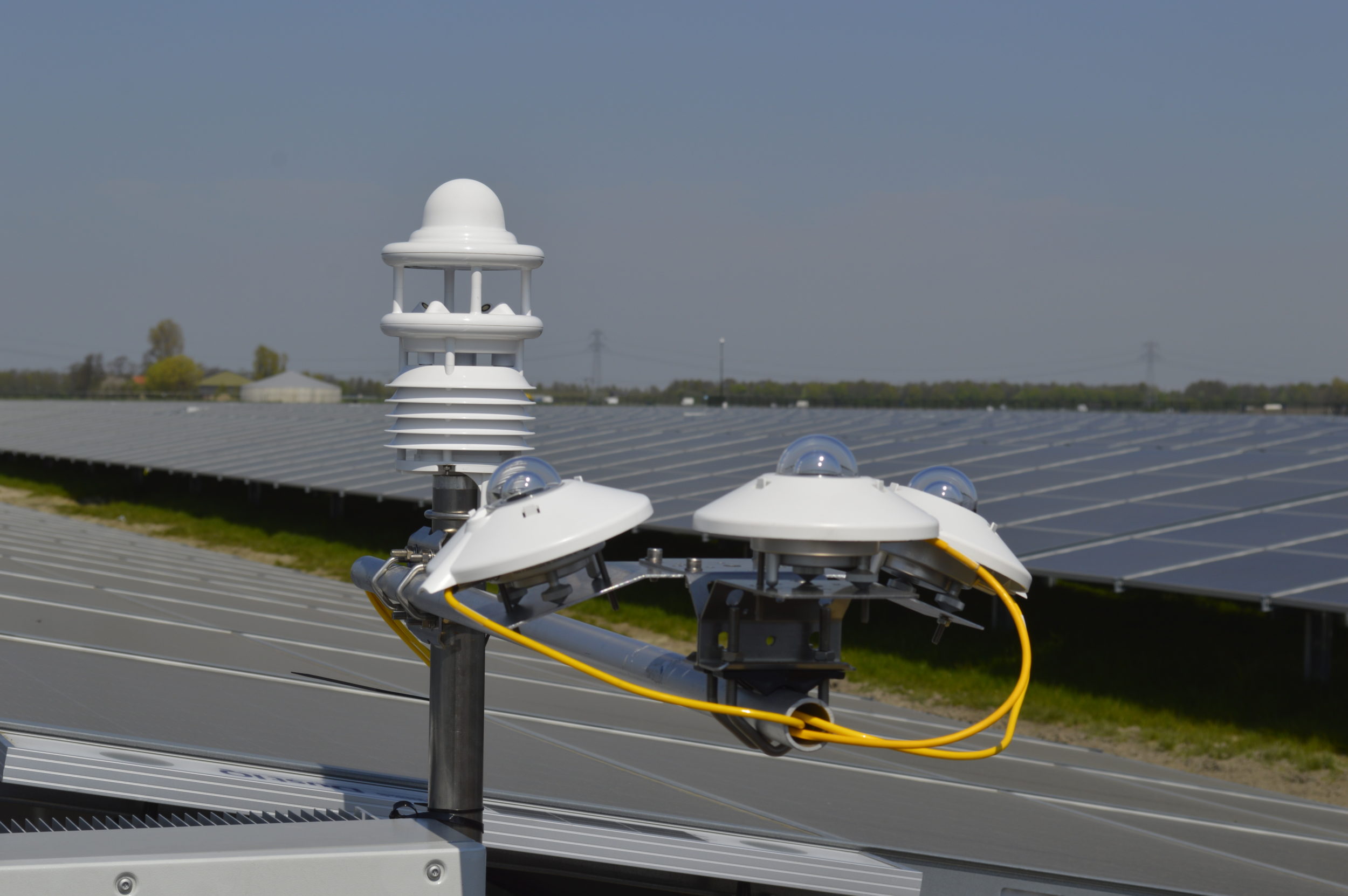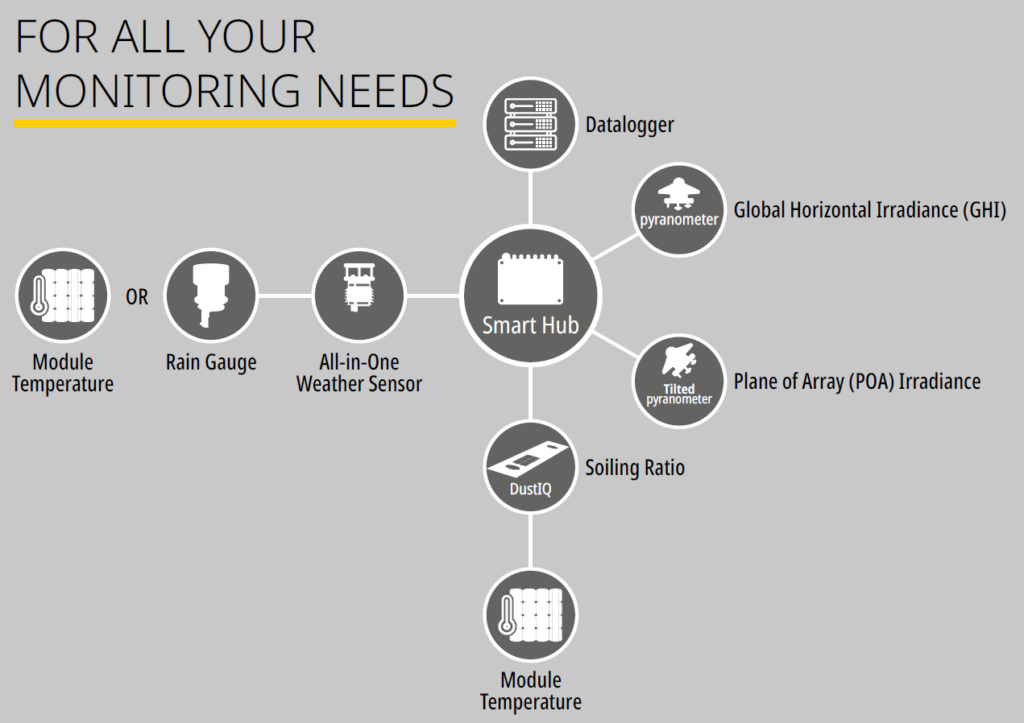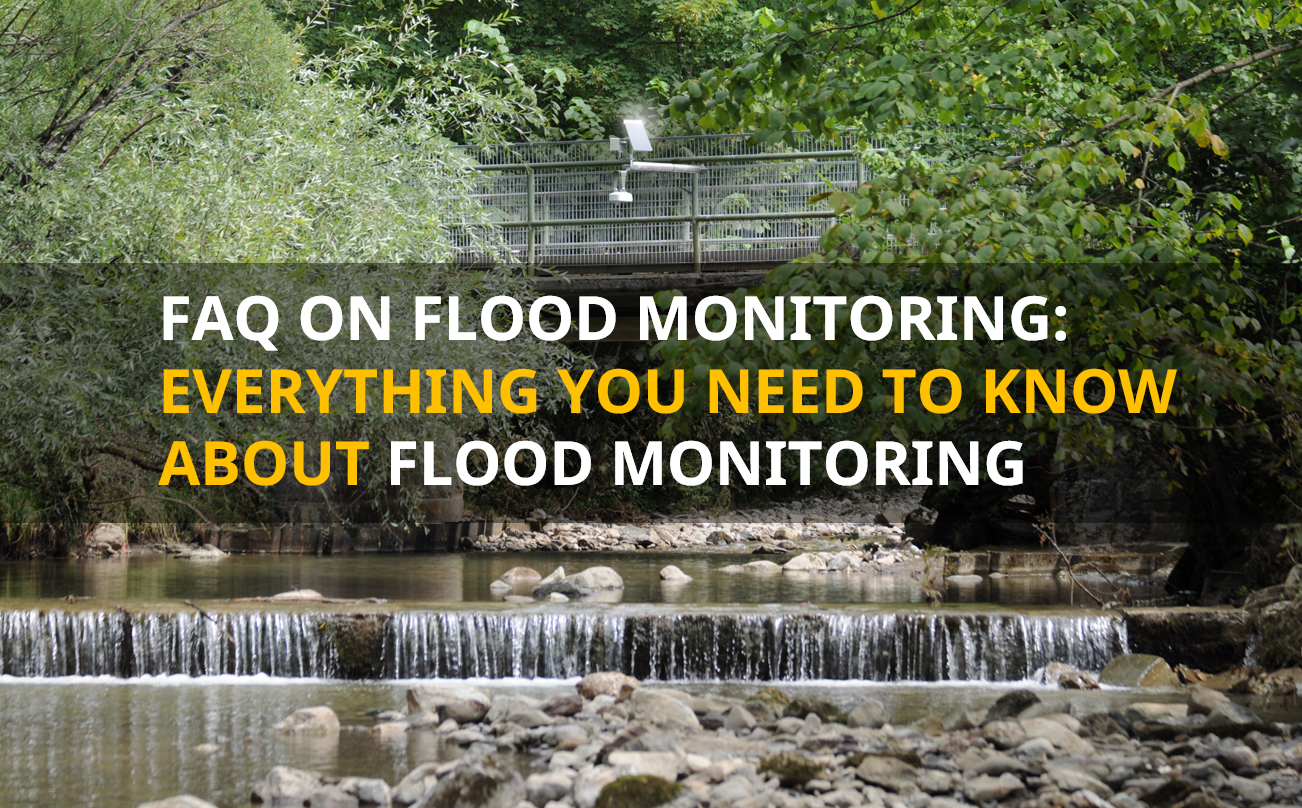Weather conditions have a huge influence on photovoltaic output. Even intermittent cloud cover can have a dramatic effect on incident solar energy, while other factors like air temperature, wind direction and speed, precipitation, humidity and air pressure can all influence the efficiency of solar cells. Monitoring weather conditions accurately is crucial in order to understand variations in PV plant performance.
Why monitor weather parameters?
While variations in weather conditions may be of only passing concern to the average domestic PV user, they are of critical importance for commercial and industrial PV systems.
For large installations, even small relative fluctuations in performance can make a huge difference to overall productivity, and any source of output variation must be closely monitored to ensure the overall system is performing optimally. In these cases, meteorological monitoring is essential in order to determine whether variations in output are due to weather conditions, or indicative of more serious hardware degradation or malfunction.
Weather monitoring is, therefore, an essential part of understanding PV system health and scheduling maintenance on time. Analysis of historical data – on precipitation and wind conditions, for example – enables seasonal trends to be uncovered, which can in turn be used to optimize cleaning and maintenance schedules on a seasonal basis.
Performance ratio is a vital indicator for PV asset owners – but it’s far from the only parameter of interest.
Important insight shared by solar professionals
Which weather parameters are important for solar PV?
Solar irradiance
Measurements of solar irradiance are crucial in order to determine the efficiency of a solar plant. This is usually expressed in terms of a performance radio (PR): the actual yield of the plant (how much energy it produces in a given time period) expressed as a percentage of its theoretical yield (how much energy it could produce in that time period assuming the panels convert the incident light into energy at their nominal efficiency).
Performance Ratio = Actual Yield / Theoretical Yield x 100
The theoretical yield of a plant can only be calculated using measurements of different components of solar irradiation. This means that these measurements are essential in order to calculate the performance ratio.
Performance ratio is a vital indicator for PV asset owners – but it’s far from the only parameter of interest. Monitoring other weather parameters that directly impact solar cells is essential to obtain a complete picture of plant performance.
Ambient air and module temperatures
Photovoltaic efficiency is strongly dependent on temperature. As a rule of thumb, for every degree centigrade the temperature rises over 25 °C, the efficiency of a typical PV module drops by around 0.5%. Measuring both the temperature of ambient air and the modules themselves enables the calculation of a temperature-corrected performance ratio, giving PV plant operators a more accurate picture of plant performance.
Wind speed and direction
Wind can also have a dramatic effect on PV module temperature. Since PV surface temperatures are hotter than ambient air, wind cools them down, thus increasing their efficiency and output in warmer environments. Wind also has a significant effect on soiling, so knowledge of wind conditions can play an important role in soiling monitoring.
Since high wind speeds can damage PV installations, monitoring wind speed and direction is often important for determining safe locations for equipment – and can affect insurance payments.
Precipitation
Different kinds of precipitation can have a range of effects, both good and bad, on PV plants.
While heavy rainfall can dramatically reduce soiling by washing off dirt, light rainfall can actually increase panel soiling.3 Meanwhile, hailstorms can cause serious damage to panels and equipment.4
Humidity, air pressure and dew point
Air pressure, humidity and dew point affect the occurrence of snow, frost and condensation on panels which, as well as decreasing energy output, can have an effect on soiling. Air humidity, in particular, can also produce spectral changes which affect the productivity of PV modules.°
Podcast: Weather Monitoring for Smaller PV installations
Building an Effective Meteorological Station for Solar PV
Thanks to the number of parameters of interest and the sheer volume of different sensors on the market, assembling a meteorological station capable of providing complete and accurate information can be daunting.
Often, mixing-and-matching sensors from different vendors means contending with multiple data formats and software interfaces as well as having to grapple with complex mounting configurations and long cable runs. OTT HydroMet offers a complete range of meteorological sensing solutions that provide a simplified and integrated experience.
Meteorological Sensors from OTT HydroMet
OTT HydroMet meteorological sensors are tailor-made for commercial and industrial solar PV installations.
The Lufft WS line offers powerful instruments with various combinations of sensors for measuring atmospheric parameters. For solar PV applications, we recommend the Lufft WS600. It measures air temperature, wind speed and direction, relative humidity, air pressure, and precipitation.
Lufft WS all-in-one sensors come with active ventilation and integrated heating to deliver best-in-class accuracy and long-term reliability, providing commercial and industrial PV facilities with unparalleled insight into plant performance.
Thanks to its simple modular design the WS600 can be easily integrated into existing data acquisition systems via a single Modbus connection. Integration with other OTT HydroMet solutions is made especially easy using our Smart Hub, which enables pyranometers, soiling monitoring systems, and weather sensors to be connected.
A complete environmental monitoring system from OTT HydroMet means all relevant weather parameters can be easily, accurately, and reliably monitored with proven instruments from its brands such as Kipp & Zonen and Lufft.
Selected setup recommended for solar PV plants:
- WS600 All-in-One Weather Sensor
- SMP10 Pyranometer
- CVF4 Pyranometer Ventilation Unit
- DustIQ Soiling Monitoring System
- Smart Powered Hub
You should consider the new Kipp & Zonen SMP12 Class A pyranometer, too. It comes with integrated heating and additional features to maintain highest measurement accuracy such as sensors to measure the tilt angle and humidity inside the housing. To find out more about our meteorological solutions for solar PV applications, get in touch with OTT HydroMet today.




